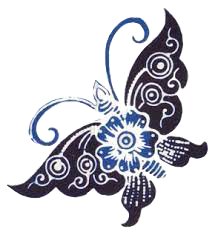Casual Discussion of the KABARI Program with Batik Artisans in Lasem
The Lasem Heritage Foundation, as the Regional Implementing Partner of the Central Java Regional Office of Bank Indonesia (BI) for the Subsistence MSME Development program, held a Focus Group Discussion (FGD) as part of the KABARI (Kartini Bangun Negeri) program at the Nyah Lasem Museum in Karangturi Village. Representatives from the Rembang Regency Tourism and Culture Office, the Rembang Regency Industry, Trade, Cooperatives & MSMEs Office, the Lasem Batik Tulis Cooperative, the Batik Cluster, and craft activists in Rembang Regency attended the event.
The FGD aimed to convey the results of a field survey conducted by surveyors of batik houses in Lasem City and its surroundings. The survey, conducted door-to-door, from one batik house to another, was expected to yield maximum data.
The almost full-day event began at 9:30 a.m. Western Indonesian Time (WIB) and was opened by the Head of the Central Java BI Office of Bank Indonesia (BI) for the Central Java Regional Office of Bank Indonesia (BI) for the Central Java Regional Office of Bank Indonesia (BI) for the Central Java Regional Office of Bank Indonesia (BI) for the Central Java Regional Office of Bank Indonesia (BI) for the Central Java Regional Office of Bank Indonesia (BI) for the Central Java Regional Office of Bank Indonesia (BI) for the Central Java Regional Office of Bank Indonesia (BI) for the Central Java Regional Office of Bank Indonesia (BI) for the Central Java Regional Office of Bank Indonesia (BI) and ... and the Central Java Regional Office of Bank Indonesia (BI) for the Central Java Regional Office of Bank Indonesia (BI) and the Central Java Regional Office of Bank Indonesia (BI) and the Central Java Regional Office of Bank Indonesia (BI) for the Central Java Regional Office of Bank Indonesia (BI) and the Central Java Regional The event concluded at 4:00 PM WIB (Western Indonesian Time), divided into several sessions: the first session presented the survey results, followed by a presentation of the "Kabari" (News and Discussion) program, and finally, a participatory SWOT analysis conducted by the FGD participants.
On that occasion, Agni Malagina, Team Leader of the "Kartini Bangun Negeri" (Kartini Builds the Nation) program, presented the survey results, which included indicators for assessing batik houses, to the FGD participants. This was well-received by the batik house managers in attendance. Santoso (Head of the Lasem Batik Cluster) stated, "By presenting these survey results, I learned about the overall problems facing batik houses in Lasem City. I also learned about several batik houses that have ceased production."
During the discussion, participants enthusiastically shared their responses regarding the challenges faced in managing batik businesses. However, a frequently encountered problem is the low rate of batik artisan regeneration, with most batik artisans currently aged over 40. This has raised concerns that the availability of Lasem hand-drawn batik, which has been designated an intangible world heritage, is gradually diminishing.
By the time the project concluded, 13 problems or obstacles were faced by batik house managers in Lasem City and the surrounding area. These problems or obstacles included:
- Lasem batik production is still strictly following the current trend, preventing it from experiencing maximum growth.
- It is hoped that the production process for Lasem hand-drawn batik, including dyeing, will be computerized.
- There have been no meetings between batik artisans and textile producers to foster collaboration.
- Sewing machines in the batik cooperative are limited, despite the cooperative's membership of over 70. They are unsure what to do with the sewing machines, and they are also facing the challenge of limited space.
- The human resources of Lasem hand-drawn batik artisans are declining, especially among young people.
- The lack of the latest technology to replace and address the problem of diminishing human resources does not diminish the value of batik itself. There is a lack of shared concepts and narratives about what distinguishes Lasem batik from other batik artisans.
- Batik has not been able to maximize the welfare of its batik artisans.
- Batik has not been able to maximize the welfare of its batik artisans.
- Raw materials are increasingly expensive, but the selling price of Lasem batik is relatively cheap compared to Batik Solo and Pekalongan batik.
- Batik artisans are experiencing difficulties diversifying their products, one of which is to match up-to-date clothing styles.
- Lack of skills in combining Lasem batik fabrics. While batik fabrics are becoming more expensive, batik clothing is still relatively affordable.
- Lack of street fashion, enabling young people to wear matching batik.
- There is no batik vocational school (SMK). It is hoped that the existence of a vocational school will address the problem of the declining number of batik artisans, especially young people. Equipped with adequate equipment and technology, and equipped with batik knowledge, the youth of Lasem will have a shared understanding of Lasem batik and even foster a love for Lasem batik.

